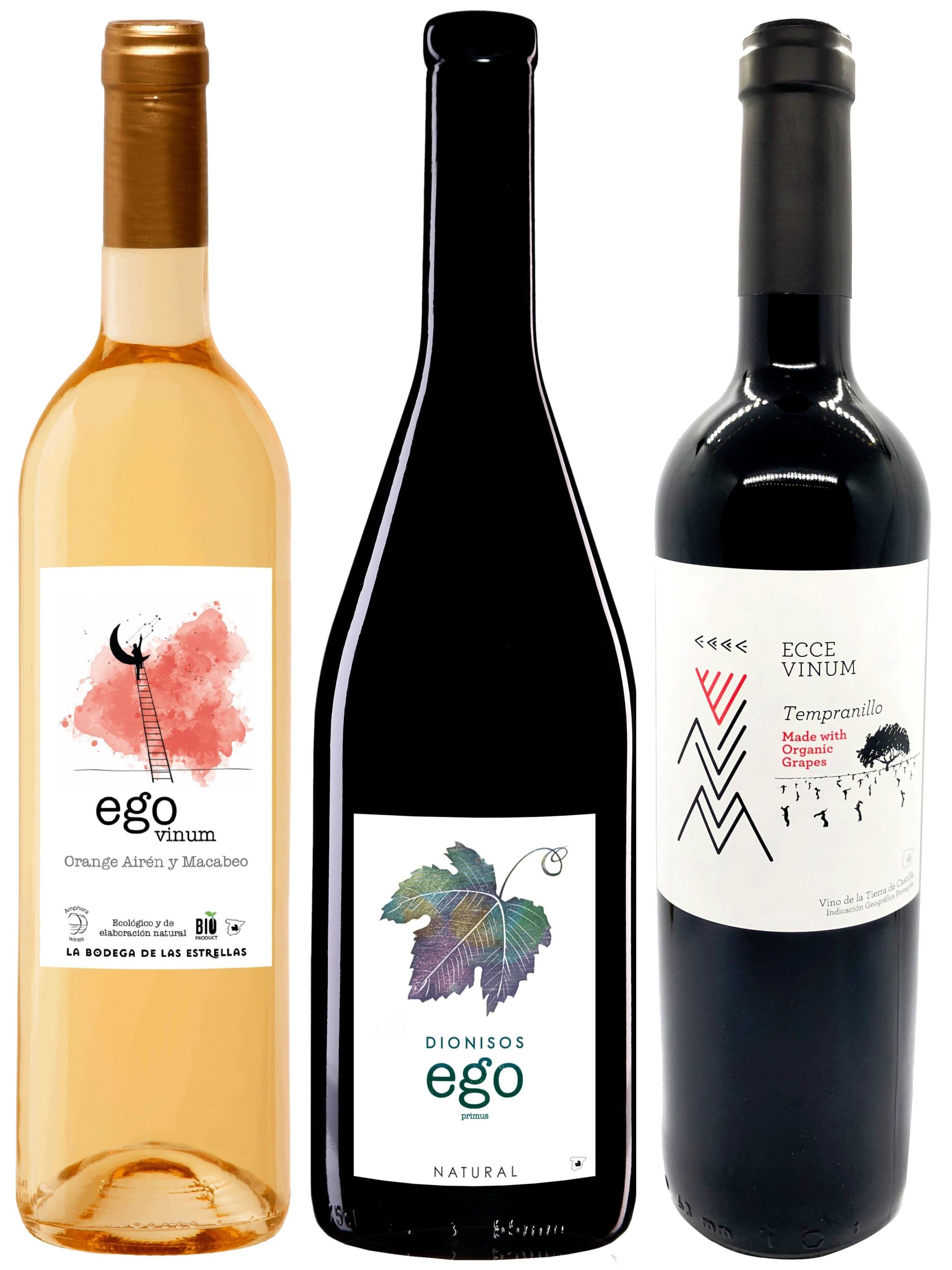Explore the Windmill & Wine Country of Spain
“Look there, Sancho Panza, my friend, and see those thirty or so wild giants, with whom I intend to do battle and kill each and all of them."
"What giants?" Asked Sancho Panza.
"The ones you can see over there," answered his master, "with the huge arms, some of which are very nearly two leagues long."
"Now look, your grace," said Sancho, "what you see over there aren't giants, but windmills."
"Obviously," replied Don Quixote, "you don't know much about adventures.”- Miguel de Cervantes, Don Quixote de la Mancha
Adventuring around the Spanish region of Castilla-La Mancha, one sees the towering windmills dotting the hillsides and plains, and cannot help but let the mind wander to the enduring image of mad Don Quixote riding wildly to do battle with them. It is understandable to see how the land of Castilla-La Mancha influenced writer Miguel de Cervantes to pen his most famous work about adventure, madness, and chivalry. But from a rich and storied culture, to expansive wine and food traditions, there is so much more to this fascinating region hiding behind its windmills.
The Toledo Skyline and lights as seen at night.
History and Culture
Castilla-La Mancha has a diverse culture and rich in history. Like much of Europe, it was a collection of bronze and iron age settlements, eventually growing and becoming a part of the vast Roman empire. Throughout ancient history and the middle ages, it was conquered by numerous different cultures such as the Visigoths immediately after the Romans, later Muslims under the Moorish invasion took control, and eventually Christian Kings and Emperors from other parts of Europe solidified and maintained power. Part of the beauty of the area is to discover all the ways each piece of culture and each part of history has blended in and left its mark.
Toledo, having been the seat of power for all the conquering kingdoms, is a perfect example of this diverse and marvelous mixture of cultures and history. Wandering the streets of Toledo, one not only finds Roman ruins, but also medieval mosques and synagogues. Turn another corner, and one can visit expansive cathedrals and monasteries as well.
Geography of Castilla-La Mancha
Daytime View of Ecce Vinum vineyards in the plains of Castilla-La Mancha.
Castilla-La Mancha is located in central Spain, and bordered by Andalusia to the south, Madrid the northwest, and Valencia to the east. While one of the larger regions of Spain, it is also the least populated, giving it a natural, wild feeling. In Castilla-La Mancha one finds a diverse landscape, ranging from mountain slopes to wide plains. These differences are what give the area its unique character: from agriculture, to livestock, to beekeeping the rugged terrain of Castilla-La Mancha
Landlocked Castilla-La Mancha sits upon a large, stretching plain at a relatively high overall elevation, averaging sometimes 2200 feet above sea level. This leads to a diurnal climate with large temperature variations: summers can be exceptionally dry and hot, and winters falling well below freezing. This actually can do wonders for vineyards and making good wine. In some areas, such as the vineyards of Ecce Vinum winery in Miguel Esteban near Toledo, the rocky soil absorbs all the hot sun, and slowly allows it to dissipate during the night, creating a slower temperature shift during the evenings.
Contrary to Professor Higgins in My Fair Lady, the rain in Spain does not stay mainly in the plain. While not a desert, the low amount of rainfall is not widespread enough to support the entire region.. So with agricultural fields stretching for miles, but little water to power mill houses… how is one to grind the grain?
The Windmills of Don Quixote
The windmills from Campo de Criptana, a town in Castilla-La Mancha near Ecce Vinum winery.
To grind the grains that grew so well in the unique Castilla-La Mancha climate, locals took advantage of the wind. They built towering windmills with large outstretching arms to catch the air movement and spin, and inside, this turned the grinding stones. In Miguel de Cervantes landmark work Don Quixote de la Mancha, one of the more impressing and memorable scenes revolves around these windmills. Searching for ways to prove himself a valorous knight, Don Quixote spies the enormous windmills, and mistaking them for evil giants, rides forth to do battle, with expected consequences. We see the reflections of this even in modern culture, with turns of phrase such as ‘tilting at windmills’ have come to mean a crazy action or unrealistic idea.
Many of these windmills in Castilla-La Mancha are still operational and can be visited. Many also host annual festivals to celebrate Don Quixote and local culture. While perhaps now more of a tourist destination, it is important these once were crucial to everyday life in the area, especially to local agriculture, and yes, that includes wine.
Wine
Even though Castilla-La Mancha produces over a third of Spain’s wine production, it is not known as a top wine making region in Spain. However, there are up and coming producers like Ecce Vinum and Bodega de las Estrellas that are out to change that idea, and by using low intervention and sustainable farming techniques Ecce Vinum is changing the views on this region from ‘large quantity’ to ‘high quality’.
Ecce Vinum was started by young vigneron Moises Casas, while working as a wine maker for a local large producer. He decided to apply his knowledge and passion to making wine from his family’s grapes, some 100 years old. His dream was to create a new benchmark for modern wine and to show that sustainable and organic farming practices can create the finest of wines.
Located near Toledo in the city of Miguel Esteban, the vineyards of Ecce Vinum are a testament to the beauty of the region, and winemaker Moises revels in that. He strives to create wines that are sustainable and don’t remove from the earth, but give back. Using organic processes, he also farms with vegan methods, reusing vegetative materials for mulch in the vineyards. When tasting the wines of Ecce Vinum, it is obvious the care he takes to respect the local environment, such as preserving the amazing Natural Reserve of Los Charcones, nearby Ecce Vinum. This beautiful reserve is a part of Ecce Vinum philosophy, and Moises strives to respect the diverse flora and fauna that thrive there, nearby to his vineyards. Other sustainable practices such as utilizing gravity flow and hand harvesting allow Moises to treasure the Castilla-La Mancha landscape.
To read more about Bodega de las Estrellas, you can check out our article about amphora aged wines.
Culinary Expeditions
As with most expansive wine regions, a deep-seated culinary heritage underlies life in Castilla-La Mancha. One of the most famous Spanish cheeses, Manchego, comes from this region, with its name translating literally to ‘from La Mancha’. This sheep’s milk cheese can be enjoyed fresh or aged. The younger the cheese, the more creamier the texture and the more tart flavor of sheep’s milk. As it ages for up to two years, it becomes a slightly more solid texture with a more savory flavor. In either case, it is a typical cheese to serve as part of your tapas, and is delicious to nibble on as you sip a refreshing white Verdejo.
The region is also famous for saffron cultivation and olive oils, with its saffron considered the most precious of all saffron world-wide. On the table, one sees the terrain reflected in the plates typical to the Castilla-La Mancha cuisine. The rural, agrarian past has created a host of simple pastoral style dishes such as stews and roasts. The rich history of Spain and Castilla-La Mancha also contributes greatly to its modern cuisine such as the use of Arab spices as a nod to the Muslim conquests in the medieval era. With dishes like this, it is no wonder red wines such as Tempranillo are also popular wines to drink in the area.
Taste it for Yourself
There is no doubt that Castilla-La Mancha is an up and coming Spanish gem of a region. When we are all ready to travel again, its charm holds a little bit of something for everyone: history, nature, wine, and food. But, in this momentary absence of travel, visit the region with your glass! Taste the sustainable, organic, and vegan wines of Ecce Vinum like a bold Tempranillo.
Meet and taste live along with winemaker Moises Casas of Ecce Vinum during a special VeroTalk and Fundraiser with sommelier Yannick Benjamin who co-founded Wine on Wheels, a non profit which empowers people with disabilities to follow their passions.







